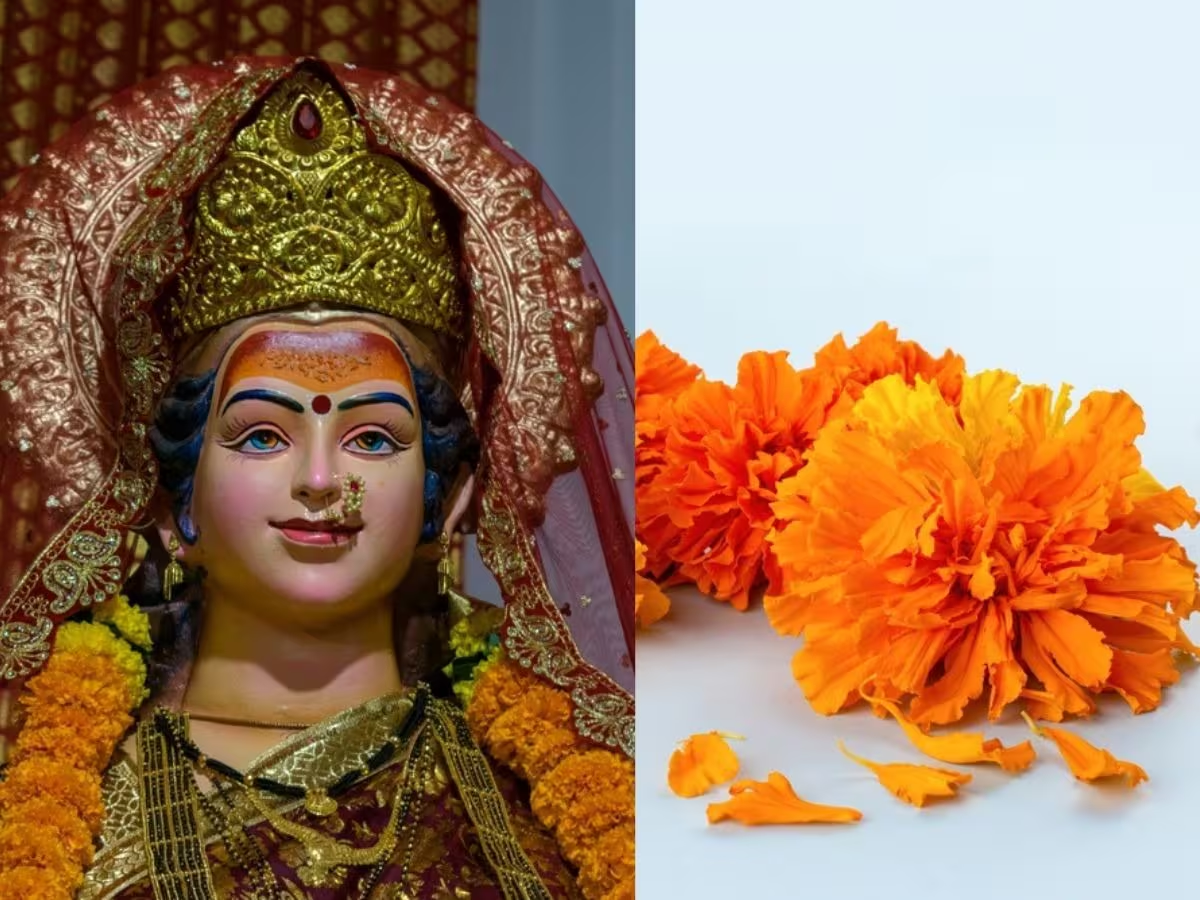- Day-wise Description:
- Day 1: Shailaputri – Daughter of the mountains.
- Day 2: Brahmacharini – The ascetic goddess.
- Day 3: Chandraghanta – The goddess of courage.
- Day 4: Kushmanda – The creator of the universe.
- Day 5: Skandamata – The mother of Skanda (Kartikeya).
- Day 6: Katyayani – The warrior goddess.
- Day 7: Kalaratri – The fierce form of Durga.
- Day 8: Mahagauri – The symbol of purity.
- Day 9: Siddhidatri – The giver of accomplishments.
3. Maa Durga Pooja Rituals
- Preparation: Discuss how to set up a home altar for Maa Durga, including necessary items (idol, flowers, incense, etc.).
- Daily Pooja Rituals: Explain the steps for performing the daily rituals, including:
- Offering prayers and mantras.
- The significance of offerings like fruits, sweets, and flowers.
- Aarti and Bhajan: Highlight popular aartis and bhajans dedicated to Maa Durga.
4. Festive Recipes for Durga Pooja
- Traditional Fasting Foods: Share recipes that are suitable for Navratri fasting, such as:
- Sabudana Khichdi
- Kuttu ki Puri
- Singhare ke Aate ka Halwa
- Prasad Ideas: Suggest items that can be offered as prasad, like coconut, jaggery sweets, and fruits.
5. Cultural Significance
- Celebrations Across India: Describe how Maa Durga Pooja is celebrated differently in various regions, including:
- Durga Puja in West Bengal.
- Navratri Garba in Gujarat.
- Golu in Tamil Nadu.
- Importance of Community: Discuss the communal aspect of the festival, including gatherings and public celebrations.
6. The Story Behind Durga Pooja
- Legend of Mahishasura: Narrate the mythological story of the buffalo demon Mahishasura and how Maa Durga defeated him.
- Significance of the Victory: Discuss what this victory symbolizes in the context of good over evil.
7. Devotional Practices and Mantras
- Important Mantras: Provide a list of mantras and their meanings, such as:
- Durga Saptashati
- Mahishasura Mardini Stotra
- Meditation and Reflection: Encourage readers to engage in meditation or journaling during this time.
8. Art and Craft Ideas
- DIY Decorations: Offer ideas for creating beautiful decorations for the pooja, such as:
- Rangoli designs.
- Handmade garlands.
- Creating a Durga Idol: Guide on making eco-friendly idols using clay or natural materials.
9. Personal Reflections and Community Sharing
- Encourage Story Sharing: Invite readers to share their own experiences and traditions related to Maa Durga Pooja.
- Reflections on Strength and Empowerment: Discuss how the worship of Maa Durga inspires personal strength and empowerment.
10. Conclusion
- Celebrating the Spirit of Durga: Summarize the essence of Maa Durga Pooja and its significance in modern life.
- Wishing Goodness and Prosperity: End with a heartfelt wish for blessings and prosperity during Navratri.
Feel free to expand on any section or let me know if you need specific details!


